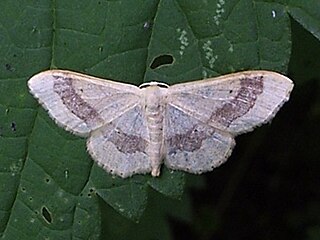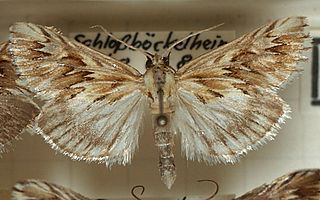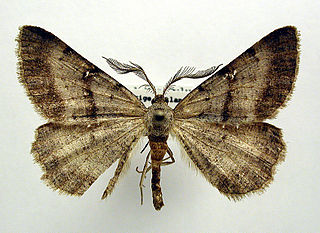
Idaea, sometimes called Hyriogona, is a large genus of geometer moths. It was erected by Georg Friedrich Treitschke in 1825. They are found nearly worldwide, with many native to the Mediterranean, the African savannas, and the deserts of western Asia.

Cynaeda is a genus of moths of the family Crambidae.

Antitype is a genus of moths of the family Noctuidae. The genus was erected by Jacob Hübner in 1821.

Cleonymia is a genus of moths of the family Noctuidae.

Cosmia is a genus of moths of the family Noctuidae.

Euxoa is a genus of moths of the family Noctuidae raised to Genus by the German entomologist, Jacob Hübner. The Genus is mostly confined to dry and semi dry areas in the Northern Hemisphere. There 130 species in Eurasia, a few in Africa, and 175 in North America. There are no species in the Genus in South-East Asia or in Australia. In North America, most species are found in Western regions. Of the North American species, 4 are endemic to Mexico. There is one species recorded from Chile, but this may be a mislabeled specimen. In real terms, species numbers do not equal species abundance. Some areas with few species have large numbers of the ones that do live there.

Hypenodes is a genus of moths of the family Erebidae erected by Henry Doubleday in 1850.
Translatix is a genus of moths of the family Noctuidae. The genus was erected by Emilio Berio in 1991. The type species of the genus is Hypenodes kalchbergiStaudinger, 1876.
Oecia is a monotypic moth genus first described by Lord Walsingham in 1897. It is in the family Autostichidae. Its only species, Oecia oecophila, described by Otto Staudinger in 1876, is widely distributed in the West Indies, Central America and South America, southern Europe, Japan, northern and southern Africa, Malaya, Java, Indonesia, Australia and Hawaii. It has been widely dispersed by commerce.

Caloptilia is a genus of moths in the family Gracillariidae.

Selidosema brunnearia, the bordered grey, is a moth of the family Geometridae. The species was first described by Charles Joseph Devillers in 1789. It is found in central and southern Europe, Asia Minor, Transcaucasia and North Africa.

Hypenodes humidalis, the marsh oblique-barred, is a moth in the family Erebidae. The species was first described by Henry Doubleday in 1850. It is found in most of Europe and across the Palearctic to Siberia.
Hypenodes caducus, the large hypenodes moth, is a species of moth in the family Erebidae. It was described by Harrison Gray Dyar Jr. in 1907. It is found in North America, including British Columbia, Maryland, Massachusetts, Michigan, Minnesota, New York, Ohio, Ontario, Quebec, South Carolina and Wisconsin.
Hypenodes fractilinea, the broken-line hypenodes, is a moth in the family Erebidae. The species was described by John B. Smith in 1908. It is found from Nova Scotia south to North Carolina, west across Canada to Alberta. The habitat consists of mixed wood and deciduous woodland.
Hypenodes franclemonti is a species of moth in the family Erebidae. It was described by Douglas C. Ferguson in 1954. It is found in North America, including Florida, Michigan, Minnesota, Missouri, Pennsylvania and Quebec.
Hypenodes orientalis is a species of moth in the family Erebidae. It was described by Staudinger in 1901. It is found in Turkey, the Near East, Armenia and the southern Caucasus.








